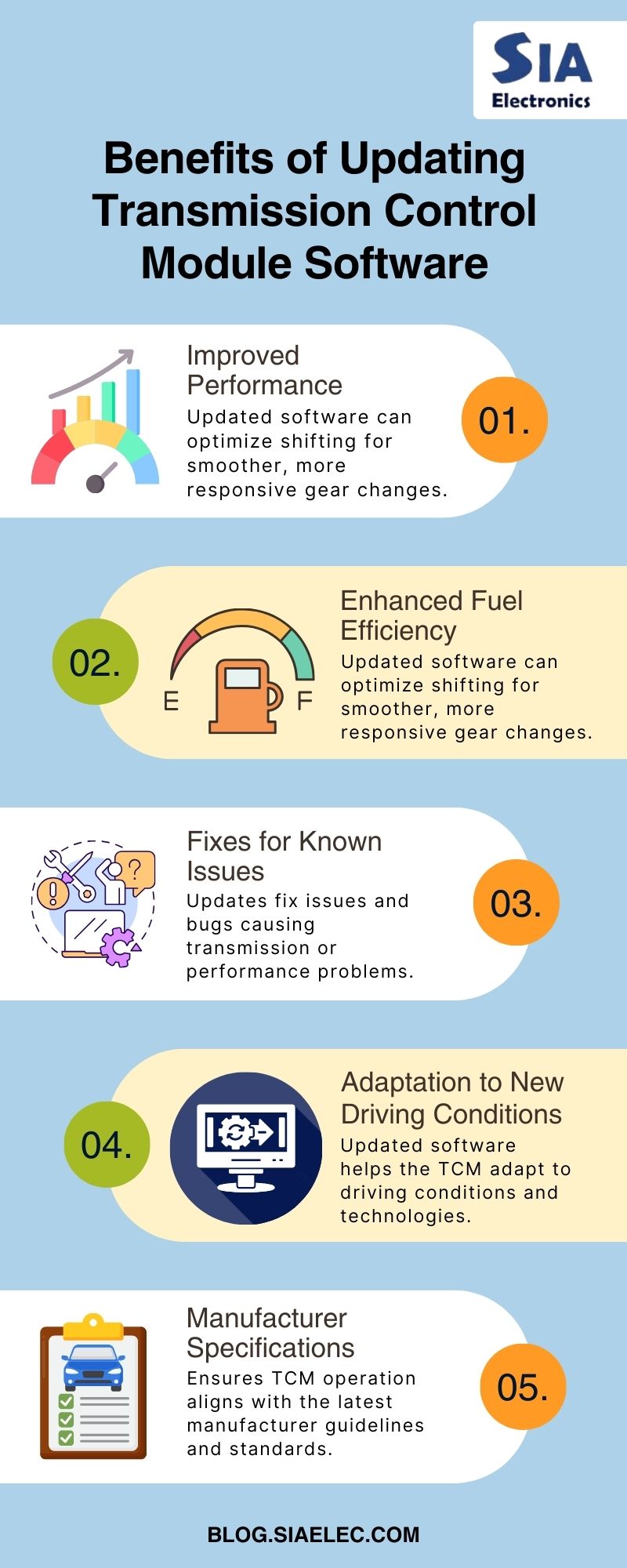Introduction
Transmission Control Module (TCM) programming is a vital process in the maintenance and performance optimization of modern vehicles. As automotive technology advances, the role of the TCM has become increasingly complex, and proper programming is essential for ensuring optimal vehicle performance. This blog explores the intricacies of Transmission Control Module programming, its benefits, and the necessary tools and signs that indicate a need for programming.
Table of Contents
What is Transmission Control Module Programming?
Transmission Control Module (TCM) programming involves updating or reconfiguring the software within the transmission control module of a vehicle. The TCM is a critical component that manages the transmission's operations, including shifting gears, monitoring transmission performance, and adapting to driving conditions.
- Purpose: Ensures the TCM operates with the latest software to improve vehicle performance and address issues.
- Scope: Includes updates, reprogramming, and calibration to align with manufacturer specifications and performance standards.
How Does Transmission Control Module Programming Work?
The process of TCM programming is a sophisticated procedure that requires precise execution. It involves several steps to ensure the TCM operates correctly and integrates seamlessly with other vehicle systems.
- Diagnostic Check: Before programming, a diagnostic tool is used to assess the TCM's current status and identify any errors.
- Software Update: The latest software version is downloaded from the manufacturer or a trusted source. This software is designed to enhance the TCM's performance and fix any known issues.
- Programming Process: The new software is uploaded to the TCM via a diagnostic tool or programmer. This process requires careful attention to detail to avoid errors.
- Calibration: After programming, the TCM is calibrated to ensure it works correctly with the vehicle's transmission and engine systems.
- Testing: The vehicle is tested to confirm that the programming has been successful and that the TCM functions as expected.
Benefits of Updating Transmission Control Module Software
Updating the TCM software offers numerous advantages, enhancing both vehicle performance and reliability. Here are some of the key benefits:
- Improved Performance: Updated software can optimize transmission shifting, providing smoother and more responsive gear changes.
- Enhanced Fuel Efficiency: Newer software versions often include improvements that enhance fuel economy by optimizing transmission performance.
- Fixes for Known Issues: Software updates address known issues and bugs that may cause transmission problems or affect vehicle performance.
- Adaptation to New Driving Conditions: Updated software can help the TCM adapt to changing driving conditions and new technologies.
- Compliance with Manufacturer Specifications: Ensures the TCM operates in line with the latest manufacturer guidelines and standards.
Successful TCM programming requires specialized tools and equipment. Here are some essential tools used in the programming process:
- Diagnostic Scanner: A diagnostic scanner is used to read and clear fault codes, perform diagnostic tests, and communicate with the TCM.
- Programming Tool: Specific tools or software are required to upload new software to the TCM. These tools may be provided by the vehicle manufacturer or third-party developers.
- Calibration Equipment: Equipment for calibrating the TCM after programming to ensure accurate performance.
- Computer or Laptop: A computer or laptop is needed to run the programming software and interface with the diagnostic tools.
- Manufacturer-Specific Software: Access to the latest software updates from the vehicle manufacturer or trusted sources.
Signs That a Transmission Control Module Needs Programming
Recognizing when a TCM requires programming is crucial for maintaining vehicle performance and avoiding potential issues. Here are some common signs:
- Unusual Shifting Patterns: If you notice erratic or rough shifting, it may indicate that the TCM needs programming or updating.
- Transmission Slippage: Slipping gears or difficulty in maintaining speed can be a sign of a malfunctioning TCM.
- Check Engine Light: A check engine light related to transmission issues may suggest that the TCM requires attention.
- Poor Fuel Economy: A sudden drop in fuel efficiency could be due to outdated TCM software affecting transmission performance.
- Transmission Error Codes: Diagnostic scans showing error codes related to the transmission often indicate a need for TCM programming.
Conclusion
Transmission Control Module programming is a crucial aspect of vehicle maintenance and performance optimization. By understanding how TCM programming works, the benefits of updating software, and the tools required, vehicle owners and technicians can ensure their transmissions operate smoothly and efficiently. Recognizing the signs that a TCM needs programming is essential for maintaining vehicle reliability and performance.
At SIA Electronics, we are industry leaders in the re-manufacturing of automotive electronic control modules and ECUs, including transmission control modules. With over 20 years of experience, we provide expert services to keep your vehicle's electronics in top condition.
FAQs on
Transmission Control Module Programming : The Ultimate Guide
-
1. What is the cost of transmission control module programming?
Ans.
The cost varies depending on the vehicle make and model, as well as the complexity of the programming. On average, it can range from $100 to $500.
-
2. Can I perform TCM programming myself?
Ans.
While some advanced DIY enthusiasts may attempt TCM programming, it is recommended to have it done by a professional to ensure accuracy and avoid potential issues.
-
3. How often should I update my TCM software?
Ans.
It is generally recommended to update the TCM software when experiencing issues or when advised by a professional. Regular updates may also be part of routine maintenance.
-
4. What happens if I ignore TCM programming needs?
Ans.
Ignoring TCM programming needs can lead to poor vehicle performance, decreased fuel efficiency, and potential transmission damage.
-
5. Is TCM programming covered under vehicle warranty?
Ans.
Coverage for TCM programming under a vehicle warranty depends on the warranty terms and the nature of the programming. Check with your vehicle manufacturer or dealer for specific details.
-
6. How long does TCM programming take?
Ans.
The programming process typically takes between 30 minutes to 2 hours, depending on the complexity of the update and the vehicle model.



